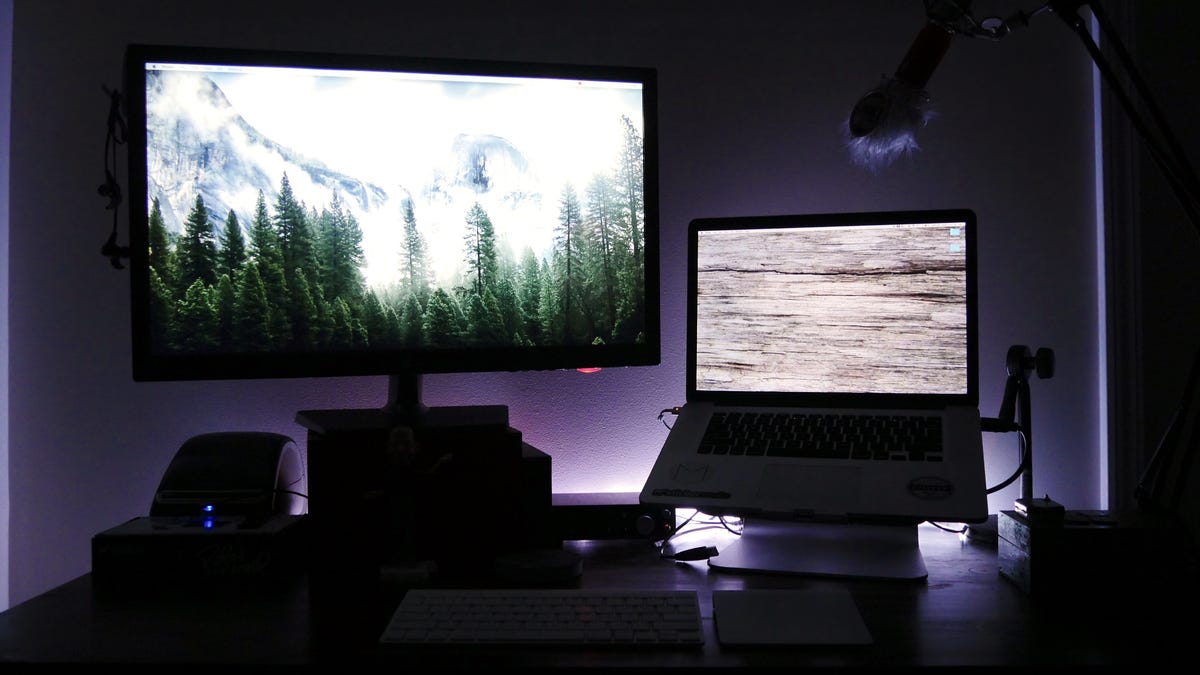Reduce eye strain when watching television at night with bias lighting
If you get headaches or dry, scratchy eyes when watching television late at night, you're not alone. To help fight eye strain and improve the picture quality of your television at night, install some bias lighting in your living room.

When working late into the night at your computer or binging your favorite TV show on Netflix, you've likely experienced some form of eye strain. Your eyes get scratchy and dry, you experience blurred vision, and you might even get a slight headache.
Surprisingly, fighting eye strain and improving the quality of your nighttime movies or work sessions is actually very simple. All you need is a properly placed light source.
Learn what bias lighting is and why it works so well.
Why bias lighting works
Backlighting of a television or monitor is called bias lighting. It works by giving your eyes a more neutral reference point for colors and contrast in a dark room.
Why does it work? Your eyes work on a system of averages, says Jason Fitzpatrick of How-To Geek. Staring at a bright display in an otherwise dark environment disrupts how our eyes measure the light:
When we watch television or use a computer workstation in a completely dark or significantly darkened room, we create a less-than-ideal viewing situation wherein our eyes are staring very intently at a small window of very bright light that is floating in a sea of darkness. Despite the fact that we accurately perceive the screen to be very bright in relationship to the rest of the scene our eyes take in, our eyes attempt to adjust based on the average brightness across the entire field of view and not the average brightness of the screen (or, conversely, the dimmer off-screen area).
In other words, your eyes do not properly dilate for the amount of light they're taking in. This forces your eyes to work harder and fatigue more quickly than they normally would. This is what leads to dry eyes, dizziness and headaches.
By placing a light behind the television, you are raising the average ambient light in the room and reducing the strain on your eyes, meaning you can watch television or work for longer without all the negative side effects.
As an added bonus, your perception of the contrast on the display will increase. This works on the same principle as the simultaneous contrast illusion. Grays and blacks appear darker when against a lighter background.
How to setup bias lighting
All you need to set up your own bias lighting is a light source placed behind your monitor or television.
The number of commercially available kits for bias lighting is only growing, and they range from about $10 to upwards of $100 online. Many kits are even USB-powered, meaning installation is as simple as plugging in the USB end of the strip into the USB port on your television and attaching the lights to the back of the television or entertainment system.
Virtually any light behind your television or monitor will improve the contrast of the picture at night. That said, the main feature you're aiming for, as explained by Fitzpatrick, is a light source with a temperature of approximately 6,500k. This is the industry standard white reference point for manufacturers of displays and content creators. Lights of a different temperature will alter your perception of the colors on the screen.
A quick and easy DIY solution for bias lighting is to use a smart bulb or LED strip behind your TV. This gives you the ability to tweak the color and brightness to your liking.
Power on the lights the next time you want to watch a movie at night and forget about dreaded dry eyes and headaches.

